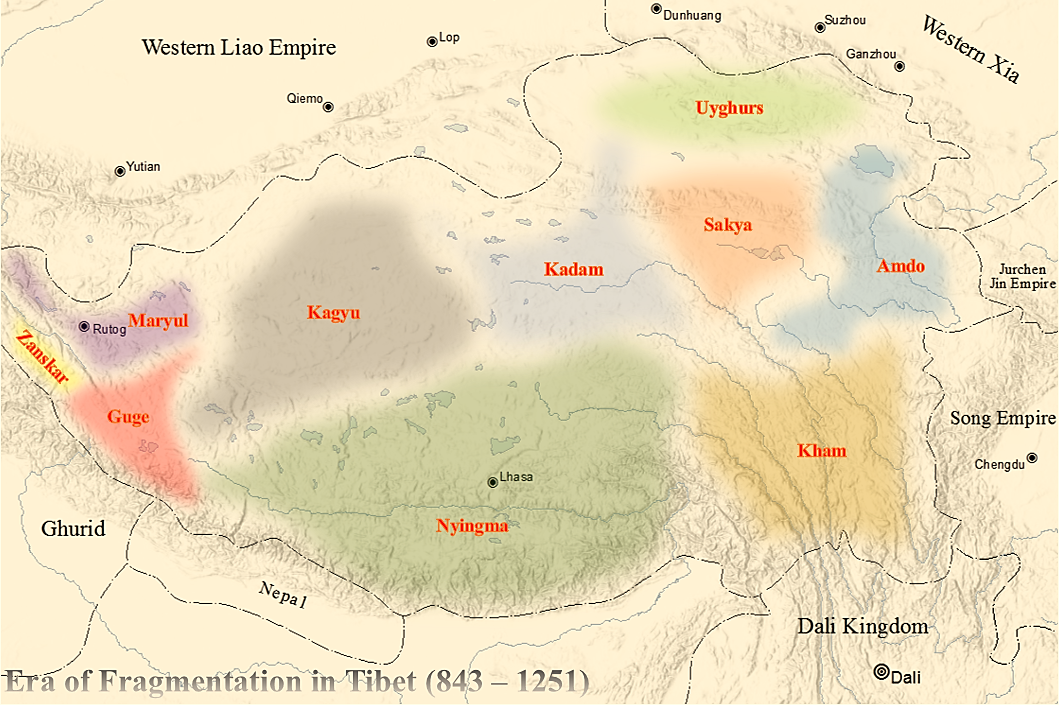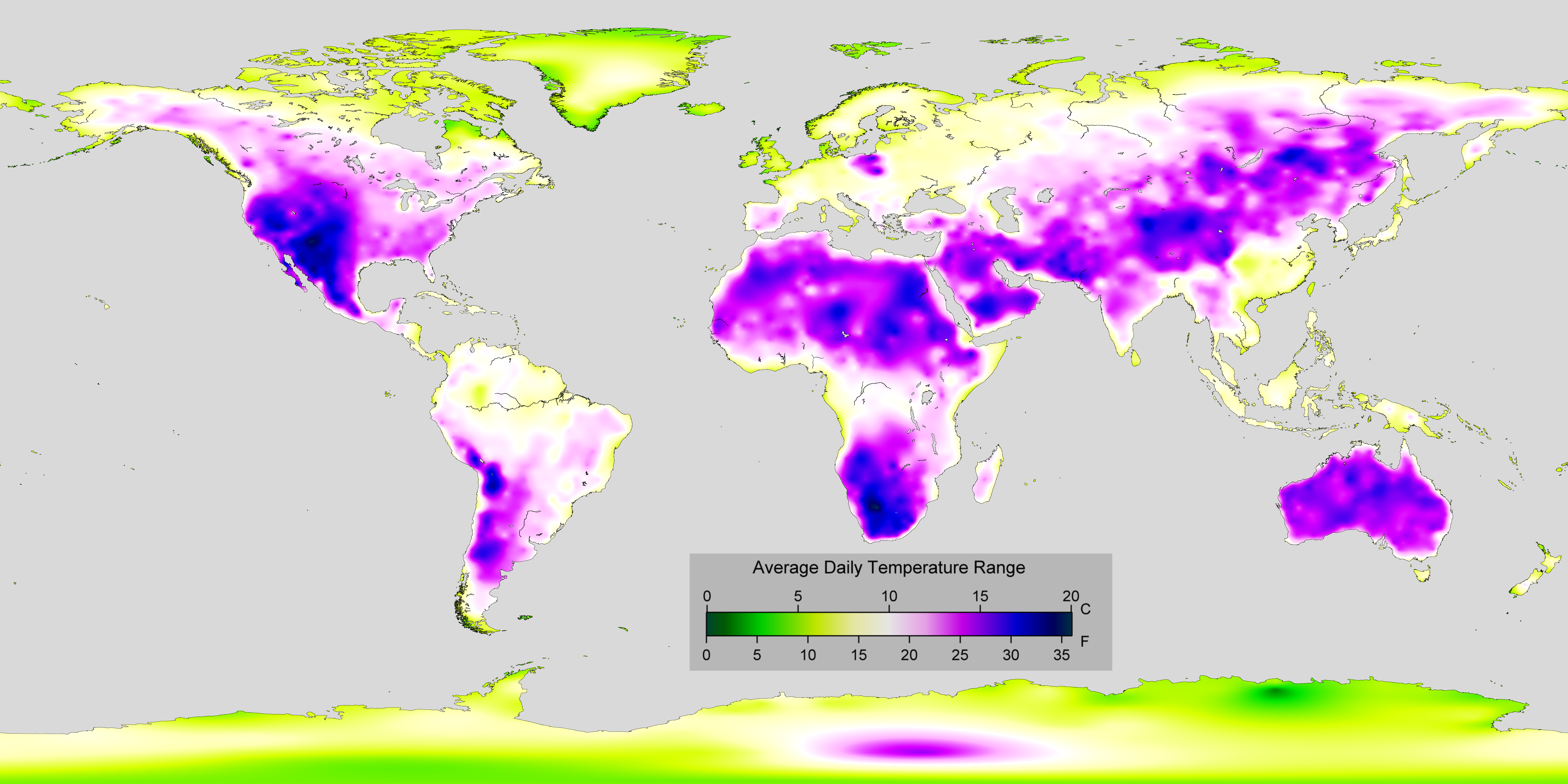|
Chamdo Town
Chengguan (; ) is a major town in the historical region of Kham in the eastern Tibet Autonomous Region of China. It is the seat of Karub District and Chamdo Prefecture, and had a population of 45,861 in 2010. It is located about east of Lhasa. By road, the distance is via the southern route or via the northern route. It is at an altitude of at the confluence of the rivers Za Qu and Ngom Qu which form the Lancang River (Mekong). At the turn of the 20th century it had a population of about 12,000, a quarter of whom were monks.Buckley and Straus 1986, p. 215. Galden Jampaling Monastery Chengguan was visited by Je Tsongkhapa in 1373 who suggested a monastery be built there. Galden Jampaling Monastery was constructed between 1436 and 1444 by a disciple of Tsongkhapa, Jansem Sherab Zangpo. It is also known as the Changbalin or Qiangbalin Si Monastery. At its height it contained five main temples and housed some 2,500 monks. It was destroyed in 1912 but the main hall (which was ... [...More Info...] [...Related Items...] OR: [Wikipedia] [Google] [Baidu] |
Towns Of The People's Republic Of China
When referring to Administrative divisions of China#Township level (4th), political divisions of China, town is the standard English translation of the Chinese (traditional: ; zh, p=zhèn , w=chen4). The Constitution of the People's Republic of China classifies towns as fourth-level administrative units, along with, for example, Townships of China, townships ( zh, s=乡 , p=xiāng). A township is typically smaller in population and more remote than a town. Similar to higher-level administrative units, the borders of a town would typically include an urban core (a small town with the population on the order of 10,000 people), as well as a rural area with some Villages of China, villages ( zh, labels=no, s=村 , p=cūn, or zh, labels=no, s=庄 , p=zhuāng). Map representation A typical provincial map would merely show a town as a circle centered at its urban area and labeled with its name, while a more detailed one (e.g., a map of a single county-level division) would also s ... [...More Info...] [...Related Items...] OR: [Wikipedia] [Google] [Baidu] |
Je Tsongkhapa
Tsongkhapa ( Tibetan: ཙོང་ཁ་པ་, '','' meaning: "the man from Tsongkha" or "the Man from Onion Valley", c. 1357–1419) was an influential Tibetan Buddhist monk, philosopher and tantric yogi, whose activities led to the formation of the Gelug school of Tibetan Buddhism.Tsong khapa (2006), pp. ix-x. His philosophical works are a grand synthesis of the Buddhist epistemological tradition of Dignāga and Dharmakīrti, the Cittamatra philosophy of the mind, and the madhyamaka philosophy of Nāgārjuna and Candrakīrti.Tsong khapa (2006), pp. ix-xii.Sparham, Gareth"Tsongkhapa" ''The Stanford Encyclopedia of Philosophy'' (Fall 2017 Edition), Edward N. Zalta (ed.). Central to his philosophical and soteriological teachings is "a radical view of emptiness" which sees all phenomena as devoid of intrinsic nature.Newland 2009, p. 8. This view of emptiness is not a kind of nihilism or a total denial of existence. Instead, it sees phenomena as existing " interdependen ... [...More Info...] [...Related Items...] OR: [Wikipedia] [Google] [Baidu] |
Populated Places In Chamdo
Population is a set of humans or other organisms in a given region or area. Governments conduct a census to quantify the resident population size within a given jurisdiction. The term is also applied to non-human animals, microorganisms, and plants, and has specific uses within such fields as ecology and genetics. Etymology The word ''population'' is derived from the Late Latin ''populatio'' (a people, a multitude), which itself is derived from the Latin word ''populus'' (a people). Use of the term Social sciences In sociology and population geography, population refers to a group of human beings with some predefined feature in common, such as location, race, ethnicity, nationality, or religion. Ecology In ecology, a population is a group of organisms of the same species which inhabit the same geographical area and are capable of interbreeding. The area of a sexual population is the area where interbreeding is possible between any opposite-sex pair within the area ... [...More Info...] [...Related Items...] OR: [Wikipedia] [Google] [Baidu] |
History Of Tibet
While the Tibetan plateau has been inhabited since pre-historic times, most of Tibet's history went unrecorded until the creation of Tibetan script in the 7th century. Tibetan texts refer to the kingdom of Zhangzhung (c. 500 BCE – 625 CE) as the precursor of later Tibetan kingdoms and the originators of the Bon religion. While mythical accounts of early rulers of the Yarlung dynasty exist, historical accounts begin with the introduction of Tibetan script from the unified Tibetan Empire in the 7th century. Following the dissolution of Tibetan Empire and a Era of Fragmentation, period of fragmentation in the 9th–10th centuries, a Buddhist revival in the 10th–12th centuries saw the development of three of the four major schools of Tibetan Buddhism. After a period of control by the Mongol Empire and the Yuan dynasty, Tibet effectively became independent in the 14th century and was ruled by a succession of noble houses for the next 300 years. In the 16th century, the Dalai Lama t ... [...More Info...] [...Related Items...] OR: [Wikipedia] [Google] [Baidu] |
Qiangba Puncog
Qiangba Puncog, also spelled Champa Phuntsok (; ; born in May 1947) was the chairman of the government of Tibet Autonomous Region of China from 2003 until January 2010. He is of Tibetan ethnicity. He was most visible in public during the 2008 Tibetan unrest, receiving diplomats and journalists. Qiangba Puncog resigned as chairman on January 12, 2010, and subsequently began serving as chairman of the Standing Committee of the People's Congress of the Tibet Autonomous Region. Biography Qiangba Puncog was born in Chamdo, Tibet in May 1947. He graduated from Chongqing University, and he joined in the Chinese Communist Party The Communist Party of China (CPC), also translated into English as Chinese Communist Party (CCP), is the founding and One-party state, sole ruling party of the People's Republic of China (PRC). Founded in 1921, the CCP emerged victorious in the ... in 1974. References {{DEFAULTSORT:Qiangba, Puncog 1947 births Living people Council of Chairp ... [...More Info...] [...Related Items...] OR: [Wikipedia] [Google] [Baidu] |
Qamdo Bangda Airport
Changdu Bangda Airport , also known as Qamdo Bamda Airport, is an airport serving Qamdo (Changdu), Tibet Autonomous Region, China. It is located in the village of Bamda (Bangda). Background At an elevation of above sea level, Qamdo Airport was formerly the highest airport in the world. It was surpassed by Daocheng Yading Airport, with an elevation of , on 16 September 2013. It has a very long runway, , a necessary feature to accommodate the reduced engine and lift performance that affect aircraft at high altitude, requiring higher than normal takeoff speeds and therefore longer takeoff and landing runs. Runway repairs took place in 2007 and 2013 after decay from the weather. A new runway was built, and the original runway was closed. Airlines and destinations See also *List of airports in China *List of the busiest airports in China *List of highest airports This is a list of the world's highest civilian airports, situated at a minimum elevation of above mean sea lev ... [...More Info...] [...Related Items...] OR: [Wikipedia] [Google] [Baidu] |
China National Highway 317
China National Highway 317 (G317) runs broadly west to east from Chengdu, Sichuan to Gar County, Ngari Prefecture, Tibet. It is 2,028 kilometres in length and forms an important transportation route in Tibet. As of 2017, Highway 317 passes through the highest vehicular tunnel in the world in the Chola Mountains of Dêgê County. Part of the route is concurrent with the Sichuan-Tibet Highway. Route and distance References See also * China National Highways The China National Highways (CNH/Guodao) () is a network of trunk roads across mainland China. Established to facilitate transportation and economic development, the system includes north-south and east-west arterial highways, expressways, and l ... {{China National Highways Transport in Chengdu Transport in Sichuan Roads in Tibet 317 ... [...More Info...] [...Related Items...] OR: [Wikipedia] [Google] [Baidu] |
China National Highway 214
China National Highway 214 (G214) runs from Xining, Qinghai to Jinghong, Yunnan. It is 3,256 kilometres in length and runs south from Xining towards Tibet, and ends in Yunnan Yunnan; is an inland Provinces of China, province in Southwestern China. The province spans approximately and has a population of 47.2 million (as of 2020). The capital of the province is Kunming. The province borders the Chinese provinces ... Province. From Zogang to Markam it shares the highway with G318. Route and distance See also * China National Highways External linksOfficial website of Ministry of Transport of PRC 214 Transport in Qinghai Roads in Tibet Transport in Yunnan {{PRChina-road-stub ... [...More Info...] [...Related Items...] OR: [Wikipedia] [Google] [Baidu] |
Diurnal Temperature Variation
In meteorology, diurnal temperature variation is the variation between a high air temperature and a low temperature that occurs during the same day. Temperature lag Temperature lag, also known as thermal inertia, is an important factor in diurnal temperature variation. Peak daily temperature generally occurs ''after'' noon, as air keeps absorbing net heat for a period of time from morning through noon and some time thereafter. Similarly, minimum daily temperature generally occurs substantially after midnight, indeed occurring during early morning in the hour around dawn, since heat is lost all night long. The analogous annual phenomenon is seasonal lag. As solar energy strikes the Earth's surface each morning, a shallow layer of air directly above the ground is heated by conduction. Heat exchange between this shallow layer of warm air and the cooler air above is very inefficient. On a warm summer's day, for example, air temperatures may vary by from just above the ground t ... [...More Info...] [...Related Items...] OR: [Wikipedia] [Google] [Baidu] |
Köppen Climate Classification
The Köppen climate classification divides Earth climates into five main climate groups, with each group being divided based on patterns of seasonal precipitation and temperature. The five main groups are ''A'' (tropical), ''B'' (arid), ''C'' (temperate), ''D'' (continental), and ''E'' (polar). Each group and subgroup is represented by a letter. All climates are assigned a main group (the first letter). All climates except for those in the ''E'' group are assigned a seasonal precipitation subgroup (the second letter). For example, ''Af'' indicates a tropical rainforest climate. The system assigns a temperature subgroup for all groups other than those in the ''A'' group, indicated by the third letter for climates in ''B'', ''C'', ''D'', and the second letter for climates in ''E''. Other examples include: ''Cfb'' indicating an oceanic climate with warm summers as indicated by the ending ''b.'', while ''Dwb'' indicates a semi-Monsoon continental climate, monsoonal continental climate ... [...More Info...] [...Related Items...] OR: [Wikipedia] [Google] [Baidu] |
Subtropical Highland Climate
An oceanic climate, also known as a marine climate or maritime climate, is the temperate climate sub-type in Köppen classification represented as ''Cfb'', typical of west coasts in higher middle latitudes of continents, generally featuring cool to warm summers and cool to mild winters (for their latitude), with a relatively narrow annual temperature range and few extremes of temperature. Oceanic climates can be found in both hemispheres generally between 40 and 60 degrees latitude, with subpolar versions extending to 70 degrees latitude in some coastal areas. Other varieties of climates usually classified together with these include subtropical highland climates, represented as ''Cwb'' or ''Cfb'', and subpolar oceanic or cold subtropical highland climates, represented as ''Cfc'' or ''Cwc''. Subtropical highland climates occur in some mountainous parts of the subtropics or tropics, some of which have monsoon influence, while their cold variants and subpolar oceanic climates occ ... [...More Info...] [...Related Items...] OR: [Wikipedia] [Google] [Baidu] |
Humid Continental
Humidity is the concentration of water vapor present in the air. Water vapor, the gaseous state of water, is generally invisible to the human eye. Humidity indicates the likelihood for precipitation, dew, or fog to be present. Humidity depends on the temperature and pressure of the system of interest. The same amount of water vapor results in higher relative humidity in cool air than warm air. A related parameter is the dew point. The amount of water vapor needed to achieve saturation increases as the temperature increases. As the temperature of a parcel of air decreases it will eventually reach the saturation point without adding or losing water mass. The amount of water vapor contained within a parcel of air can vary significantly. For example, a parcel of air near saturation may contain 8 g of water per cubic metre of air at , and 28 g of water per cubic metre of air at Three primary measurements of humidity are widely employed: absolute, relative, and specific ... [...More Info...] [...Related Items...] OR: [Wikipedia] [Google] [Baidu] |







